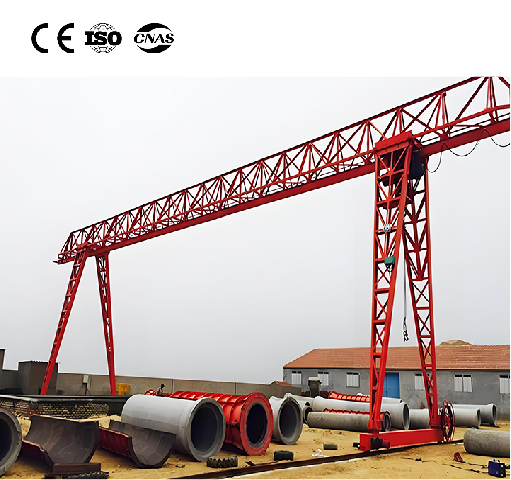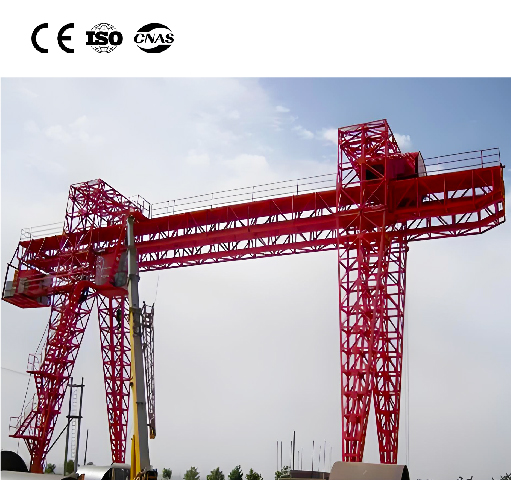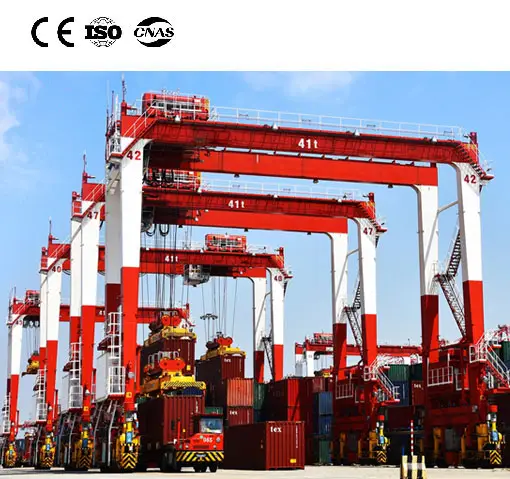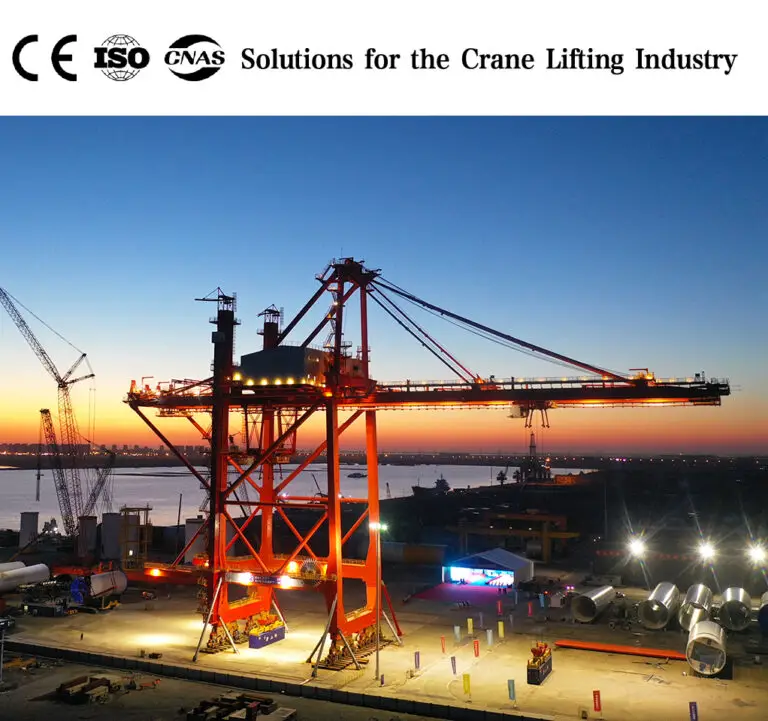Single Girder Truss Crane for Light-to-Medium Industrial Lifting 1
In the landscape of industrial material handling, single girder truss cranes emerge as cost-effective, space-saving solutions tailored for light-to-medium lifting needs. Unlike their double-girder counterparts, these cranes feature a single truss-structured beam—balancing structural efficiency, easy installation, and low operational costs. Ideal for workshops, small warehouses, and assembly lines, they fill a critical gap for operations requiring spans up to 30 meters and load capacities of 1–50 tons.

1. What Is a Single Girder Truss Crane?
A single girder truss crane is an overhead traveling crane built around a single load-bearing truss beam—composed of interconnected triangular steel units that distribute weight evenly. This design eliminates the need for a second girder, reducing overall weight and complexity while maintaining sufficient rigidity for light-to-medium loads.
Key components define its functionality and versatility:
- Truss Beam: The core structure (typically made of Q235 or Q355 steel), ranging from 8–30 meters in span. The truss design cuts material usage by 25%–35% compared to solid single-girder beams, lowering self-weight.
- Underslung Trolley: A compact trolley (mounted beneath the truss beam) that carries the hoist, moving horizontally along the beam’s length to position loads.
- End Trucks: Two wheeled units at the ends of the truss beam, enabling the crane to travel along overhead rails (mounted on facility walls or steel columns).
- Hoist Mechanism: Electric chain or wire rope hoist (rated 1–50 tons), the primary lifting component—most models include variable speed controls for precise load handling.
- Control System: Manual (cable pendant with pushbuttons) or wireless remote control, integrated with safety features like overload protection and emergency stop.
Its defining trait: The single truss beam design reduces installation complexity and space requirements—critical for facilities with low ceiling heights or limited structural capacity (e.g., old workshops or small warehouses).
2. Core Advantages of Single Girder Truss Cranes
Single girder truss cranes excel in light-to-medium industrial settings, offering unique benefits that make them a top choice for cost-conscious operations:
2.1 Low Upfront & Operational Costs
- Affordable Procurement: With a single truss beam and simplified components, these cranes cost 30%–40% less than double girder truss cranes of similar span. For example, a 10-ton, 15-meter span single girder model typically ranges from
25,000, vs.
45,000 for a double girder alternative.
- Reduced Energy Use: Lighter self-weight (20%–30% less than solid single-girder box cranes) means smaller motors (5–30 kW) power the trolley and travel systems, cutting annual electricity costs by 15%–20%.
- Lower Installation Fees: The compact design requires minimal structural modifications to existing facilities—installation takes 1–3 days (vs. 5–7 days for double girder cranes), reducing labor costs.
2.2 Space-Saving Design
- Low Headroom Requirement: The underslung trolley and single beam occupy less vertical space, making them ideal for facilities with ceiling heights as low as 4 meters (common in older workshops).
- Narrow Profile: The truss beam’s slim design (typically 300–600mm in height) minimizes obstruction of overhead lighting or HVAC systems, preserving workspace functionality.
2.3 Easy Operation & Maintenance
- Simplified Controls: Most models use intuitive pendant or remote controls, requiring minimal operator training (1–2 days vs. 3–5 days for complex double girder cranes).
- Accessible Components: The single beam design exposes key parts (trolley, hoist, end trucks) for easy inspection and repair—maintenance time is reduced by 25% compared to double girder cranes.
- Long Service Life: When constructed with corrosion-resistant steel (e.g., galvanized or epoxy-coated) and quality hoists (from brands like Yale or Harrington), these cranes operate reliably for 12–18 years.
2.4 Versatile Span & Load Capacity
- Span Range: Available in 8–30 meters, covering most small-to-medium facility sizes (e.g., 15-meter spans for workshop bays, 25-meter spans for large warehouses).
- Load Flexibility: Capacities from 1 ton (light assembly) to 50 tons (heavy-duty workshops) meet diverse needs—common in industries like automotive parts manufacturing (5–10 tons) and electronics assembly (1–3 tons).
3. Key Applications of Single Girder Truss Cranes
Single girder truss cranes are versatile across light-to-medium industrial sectors, adapting to various load types and facility constraints:
3.1 Small-to-Medium Manufacturing
- Automotive Parts Production: Lifting engine components (3–8 tons), body panels (1–5 tons), and assembled subassemblies between production stations. For example, a Tier 2 automotive supplier in Ohio uses 8 single girder truss cranes (5-ton, 12-meter span) to streamline transmission part handling.
- Electronics & Appliance Assembly: Moving lightweight but delicate loads (e.g., 2–3 ton refrigerator compressors or 1–2 ton circuit board racks) with precise speed controls to avoid damage.
3.2 Warehousing & Distribution
- Palletized Goods Handling: In e-commerce fulfillment centers or small warehouses, these cranes lift 1–5 ton pallets of goods to overhead storage racks, maximizing vertical space utilization.
- Raw Material Storage: For facilities storing bulk materials (e.g., plastic pellets or metal rods in 50kg bags), single girder truss cranes load/unload 2–10 ton bulk containers efficiently.
3.3 Repair & Maintenance Workshops
- Heavy Equipment Repair: In truck or agricultural machinery workshops, these cranes lift 5–20 ton engine blocks or chassis components for servicing. A tractor repair shop in Iowa uses a 15-ton, 20-meter span model to handle large diesel engines.
- Aerospace Component Maintenance: Lifting lightweight but large aerospace parts (e.g., 3–8 ton aircraft wings or fuselage sections) in specialized repair facilities, where space and precision are critical.
3.4 Light Construction & Fabrication
- Metal Fabrication Shops: Moving 2–10 ton steel plates, welded components, or pipe sections during fabrication. The truss beam’s rigidity ensures precise positioning for welding or cutting.
- Precast Concrete Production: Lifting 5–15 ton precast concrete slabs (e.g., wall panels or floor tiles) in small-scale construction yards, where double girder cranes would be overkill.
4. Critical Factors for Selecting a Single Girder Truss Crane
Choosing the right single girder truss crane requires aligning the equipment with your facility’s constraints and lifting needs. Below are the most important considerations:
4.1 Load Requirements
- Rated Load: Calculate the maximum weight of your typical loads (e.g., 3 tons for electronics, 10 tons for machinery repair). Add a 10%–15% safety margin (e.g., a 11.5-ton crane for 10-ton loads) to avoid overloading.
- Load Type: For fragile loads (e.g., glass panels), select a crane with variable speed hoists (0.5–10 meters/minute) and anti-sway features. For irregularly shaped loads (e.g., engine blocks), opt for a rotating hook or adjustable lifting beam.
4.2 Facility Constraints
- Ceiling Height: Measure the vertical distance from the floor to the ceiling—single girder truss cranes require at least 4 meters (for 1–5 ton models) or up to 8 meters (for 20–50 ton models) of headroom.
- Span Length: Determine the distance between the facility’s support columns (e.g., 12 meters for workshop bays, 20 meters for open warehouses). Ensure the crane’s span matches this distance (custom spans up to 30 meters are available from manufacturers like ABUS or Konecranes).
- Structural Capacity: Check if your facility’s walls or columns can support the crane’s wheel load (typically 5–20 kN per end truck). If not, opt for a lightweight model or reinforce the structure (costing
5,000).
4.3 Work Class & Duty Cycle
- Work Class: Follow ISO 4301 standards to match the crane to your usage frequency:
- A1–A2 (Light Duty): 0.5–1 hour/day (e.g., occasional repair work).
- A3–A4 (Medium Duty): 2–6 hours/day (e.g., daily manufacturing operations).
- A5 (Heavy Light Duty): 6–10 hours/day (e.g., high-volume warehousing).
- Duty Cycle: Calculate lifts per hour (e.g., 2–5 lifts/hour for medium duty, 8–12 lifts/hour for heavy light duty). High-duty cycles require reinforced truss nodes and high-performance hoists (e.g., IP54-rated motors for dust resistance).
4.4 Environmental Conditions
- Indoor vs. Outdoor Use: Indoor models (most common) use standard steel and paint, while outdoor models require corrosion-resistant coatings (zinc or polyurethane) and weatherproof electrical components (IP65-rated) to withstand rain or snow.
- Dust/Moisture: In cement plants or food processing facilities (high moisture), select cranes with dust-tight hoists and stainless steel control panels to prevent component failure.
- Temperature: For cold environments (e.g., -20°C in refrigerated warehouses), choose low-temperature lubricants and heated electrical enclosures to ensure smooth operation.
5. Maintenance Best Practices for Single Girder Truss Cranes
Proper maintenance extends the lifespan of single girder truss cranes and ensures safe, efficient operation. Follow these guidelines:
5.1 Daily Inspections (5–10 Minutes/Shift)
- Hoist Check: Inspect the chain or wire rope for fraying, kinks, or corrosion (replace if 10% of wires/links are damaged). Test the hoist’s up/down controls and brake (ensure it holds a full load without slipping).
- Truss Beam Inspection: Check for loose bolts or weld cracks (focus on truss nodes, where stress is concentrated). Tighten loose bolts with a torque wrench (follow manufacturer specs, e.g., 30–50 N·m for M12 bolts).
- Safety Systems Test: Activate the emergency stop button and overload alarm (ensure they trigger immediately). Verify that the trolley and travel limits (preventing overtravel) work correctly.
5.2 Weekly/Monthly Preventive Maintenance
- Weekly: Lubricate trolley wheels and end truck bearings with lithium-based grease (e.g., Mobilux EP 2) to reduce friction. Clean dust and debris from the truss beam with a brush or compressed air.
- Monthly: Inspect electrical connections (wiring, terminals, switches) for looseness or corrosion—tighten connections and replace damaged wires. Check the hoist’s limit switches (adjust if they don’t stop the hoist at the correct height).
5.3 Annual Overhaul (1–2 Days)
- Component Replacement: Replace worn parts like brake pads (every 1,500–2,000 hours), hoist chain links (if stretched by 3% or more), and trolley wheels (if tread wear exceeds 2mm).
- Load Testing: Conduct a static load test with 125% of the rated capacity (e.g., 12.5 tons for a 10-ton crane) to verify the truss beam’s integrity. Use certified test weights and document results.
- Paint Touch-Up: Repair chipped or rusted paint on the truss beam (use matching epoxy or galvanized paint) to prevent corrosion.
5.4 Long-Term (2–4 Years) Upgrades
- Control System Upgrade: Retrofit manual pendant controls to wireless remotes (cost:
1,500) for improved operator safety and flexibility.
- Hoist Replacement: Swap old chain hoists for more efficient wire rope hoists (if load capacity needs increase) or add variable speed drives (VSD) to reduce load sway.
- Truss Reinforcement: For facilities increasing load requirements (e.g., from 5 tons to 8 tons), add steel plates to truss nodes (cost:
3,000) to boost capacity without replacing the entire crane.
6. Future Trends in Single Girder Truss Cranes
The single girder truss crane industry is evolving to meet the demands of smarter, greener light-to-medium industrial operations. Key trends include:
6.1 Smart Monitoring & IoT Integration
- Real-Time Performance Tracking: Manufacturers like Demag and Konecranes now offer models with IoT sensors that monitor hoist temperature, truss vibration, and cable tension. Data is sent to a cloud platform (e.g., Konecranes TruConnect) for remote monitoring, reducing unplanned downtime by 30%.
- Predictive Maintenance Alerts: AI-powered software analyzes sensor data to predict component failures (e.g., “replace brake pads in 200 hours”)—helping facilities schedule maintenance proactively.
6.2 Green Energy Solutions
- Battery-Powered Hoists: For facilities with unstable electricity or outdoor use, battery-powered hoists (lithium-ion, 8–12 hour run time) replace electric models—eliminating reliance on grid power and reducing emissions.
- Energy Recovery Systems: Some high-end models include regenerative braking (recovers 20% of energy during hoist lowering) to recharge batteries or feed power back to the grid, cutting energy costs further.
6.3 Compact & Modular Designs
- Foldable Truss Beams: New models for temporary facilities (e.g., construction sites) feature foldable truss beams that reduce transport size by 50%—ideal for mobile operations.
- Modular Components: Interchangeable end trucks, trolleys, and hoists allow easy customization (e.g., swapping a 5-ton hoist for a 10-ton hoist) without replacing the entire crane, extending its useful life.
Conclusion
Single girder truss cranes are the backbone of light-to-medium industrial lifting, offering an unbeatable mix of cost-efficiency, space savings, and ease of use. By understanding their core advantages, matching them to your facility’s constraints (ceiling height, span, load needs), and following proactive maintenance practices, you can streamline operations and maximize return on investment.





